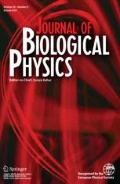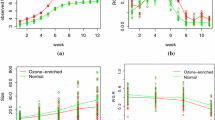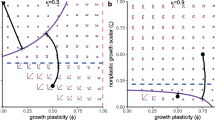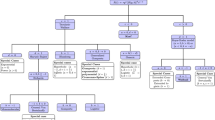Abstract
Growth curve models play an instrumental role in quantifying the growth of biological processes and have immense practical applications across all disciplines. The most popular growth metric to capture the species fitness is the “Relative Growth Rate” in this domain. The different growth laws, such as exponential, logistic, Gompertz, power, and generalized Gompertz or generalized logistic, can be characterized based on the monotonic behavior of the relative growth rate (RGR) to size or time. Thus, in this case, species fitness can be determined truly through RGR. However, in nature, RGR is often non-monotonic and specifically bell-shaped, especially in the situation when a species is adapting to a new environment [1]. In this case, species may experience with the same fitness (RGR) for two different time points. The species precise growth and maturity status cannot be determined from this RGR function. The instantaneous maturity rate (IMR), as proposed by [2], helps to determine the correct maturity status of the species. Nevertheless, the metric IMR suffers from severe drawbacks; (i) IMR is intractable for all non-integer values of a specific parameter. (ii) The measure depends on a model parameter. The mathematical expression of IMR possesses the term “carrying capacity” which is unknown to the experimenter. (iii) Note that for identifying the precise growth status of a species, it is also necessary to understand its response when the populations are deflected from their equilibrium position at carrying capacity. This is an established concept in population biology, popularly known as the return rate. However, IMR does not provide information on the species deflection rate at the steady state. Hence, we propose a new growth measure connected with the species return rate, termed the “reverse of relative of relative growth rate” (henceforth, RRRGR), which is treated as a proxy for the IMR, having similar mathematical properties. Finally, we introduce a stochastic RRRGR model for specifying precise species growth and status of maturity. We illustrate the model through numerical simulations and real fish data. We believe that this study would be helpful for fishery biologists in regulating the favorable conditions of growth so that the species can reach a steady state with optimum effort.





















Similar content being viewed by others
References
Bhowmick, A.R., Bhattacharya, S.: A new growth curve model for biological growth: some inferential studies on the growth of Cirrhinus mrigala. Math. Biosci. 254, 28–41 (2014)
Chakraborty, B., Bhowmick, A.R., Chattopadhyay, J., Bhattacharya, S.: Instantaneous maturity rate: a novel and compact characterization of biological growth curve models. J. Biol. Phys. 48(3), 295–319 (2022)
Fisher, R.A.: Some remarks on the methods formulated in a recent article on “the quantitative analysis of plant growth’’. Ann. Biol. 7(4), 367–372 (1921)
Pal, A., Bhowmick, A.R., Yeasmin, F., Bhattacharya, S.: Evolution of model specific relative growth rate: its genesis and performance over Fisher’s growth rates. J. Theor. Biol. 444, 11–27 (2018)
Bhattacharya, S.: Growth curve modelling and optimality search incorporating chronobiological and directional issues for an Indian major carp Cirrhinus mrigala. Ph.D Dissertation, Jadavpur University, Kolkata, India (2003)
Chakraborty, B., Bhowmick, A.R., Chattopadhyay, J., Bhattacharya, S.: Physiological responses of fish under environmental stress and extension of growth (curve) models. Ecol. Model. 363, 172–186 (2017)
Verhulst, P.-F.: Notice sur la loi que la population suit dans son accroissement. Corresp. Math. Phys. 10, 113–126 (1838)
Gompertz, B.: On the nature of the function expressive of the law of human mortality, and on a new mode of determining the value of life contingencies. In a Letter to Francis Baily ESQ. F.R.S. &c. Philos. Trans. R. Soc. 115, 513–583 (1825)
Richards, F.: A flexible growth function for empirical use. J. Exp. Bot. 10(2), 290–301 (1959)
Tsoularis, A., Wallace, J.: Analysis of logistic growth models. Math. Biosci. 179(1), 21–55 (2002)
Kundu, S., Dasgupta, N., Chakraborty, B., Paul, A., Ray, S., Bhattacharya, S.: Growth acceleration is the key for identifying the most favorable food concentration of Artemia sp. Ecol. Model. 455, 109639 (2021)
Paul, A., Reja, S., Kundu, S., Bhattacharya, S.: COVID-19 pandemic models revisited with a new proposal: plenty of epidemiological models outcast the simple population dynamics solution. Chaos Solitons Fract. 144, 110697 (2021)
Paul, A., Ghosh, N., Bhattacharya, S.: Estimation of the present status of the species based on the theoretical bounds of environmental noise intensity: an illustration through a big abundance data and simulation. Theor. Ecol. 15 (3), 245–266 (2022)
May, R., Conway, G., Hassell, M., Southwood, T.: Time delays, density-dependence and single-species oscillations. J. Anim. Ecol. 747–770 (1974)
Bhowmick, A. R., Sardar, T., Bhattacharya, S.: Estimation of growth regulation in natural populations by extended family of growth curve models with fractional order derivative: case studies from the global population dynamics database. Ecol. Inform. 53, 100980 (2019)
Sibly, R.M., Barker, D., Hone, J., Pagel, M.: On the stability of populations of mammals, birds, fish and insects. Ecol. Lett. 10(10), 970–976 (2007)
Chakraborty, B., Bhowmick, A.R., Chattopadhyay, J., Bhattacharya, S.: A novel unification method to characterize a broad class of growth curve models using relative growth rate. Bull. Math. Biol. 81(7), 2529–2552 (2019)
Generalized two-parameter equation of growth: Marusic, B. Z., M. J. Math. Anal. Appl. 179, 446–462 (1993)
Bertalanffy, L.V.: In Fundamental Aspects of Normal and Malignant Growth, pp. 137–259. W.W. Nowinski edn. Amsterdam (1960)
Bertalanffy, L.V.: Logistic growth rate functions. J. Theor. Biol. 21, 42 (1968)
Turner, Jr., Bradely, Jr., Kirk, K.A., Pruitt, K.M.: A theory of growth. Math. Biosci. 29, 367–373 (1976)
Korf, V.: Contribution to mathematical definition of the law of stand volume growth. Lesnicka Prace 18, 339–379 (1939)
Koya, P.R., Goshu, A.T.: Generalized mathematical model for biological growths. Op. J. Model. Simul. 1, 42–53 (2013)
Weibull, W.: A statistical distribution function of wide applicability. J. Appl. Mech. 18, 293–297 (1951)
Bhowmick, A.R., Saha, B., Chattopadhyay, J., Ray, S., Bhattacharya, S.: Cooperation in species: interplay of population regulation and extinction through global population dynamics database. Ecol. Model. 312, 150–165 (2015)
Allee, W.C.: Co-operation among animals. Am. J. Sociol. 37(3), 386–398 (1931)
Saha, B., Bhowmick, A.R., Chattopadhyay, J., Bhattacharya, S.: On the evidence of an Allee effect in herring populations and consequences for population survival: a model-based study. Ecol. Model. 250, 72–80 (2013)
Wasserman, L.: In: Bayesian Inference, pp. 175–192. Springer (2004)
Karim, M.A.U., Bhagat, S.R., Bhowmick, A.R.: Empirical detection of parameter variation in growth curve models using interval specific estimators. Chaos Solitons Fract. 157, 111902 (2022)
Mukhopadhyay, S., Hazra, A., Bhowmick, A.R., Bhattacharya, S.: On comparison of relative growth rates under different environmental conditions with application to biological data. Metron 74(3), 311–337 (2016)
Koopmans, T.: Serial correlation and quadratic forms in normal variables. Ann. Math. Stat. 13(1), 14–33 (1942)
Barton, B.: Stress in fishes: a diversity of responses with particular reference to changes in circulating cortico steroids. Integr. Comp. Biol. 42, 517–525 (2002)
Ditlevsen, S., Samson, A.: In Stochastic Biomathematical Models with Applications to Neuronal Modeling. Springer (2013)
Bishwal, J.: Parameter estimation in stochastic differential equations. Evol. Appl. (2008)
Allen, L. : An Introduction to Stochastic Processes with Applications to Biology, 2nd edn. Chapman and Hall/CRC (2010)
Oksendal, B.: Stochastic Differential Equations: An Introduction with Applications, 6th edn. Springer (2003)
Sau, A., Saha, B., Bhattacharya, S.: An extended stochastic Allee model with harvesting and the risk of extinction of the herring population. J. Theor. Biol. 503, 110375 (2020)
R Core Team: R: a language and environment for statistical computing. R Foundation for Statistical Computing, Vienna, Austria (2022). https://www.R-project.org/
Nelder, J.A., Mead, R.: A simplex method for function minimization. Computer J. 7, 308–313 (1965)
Broyden, C.G.: Numerical Methods for Unconstrained Optimization. Academic Press (1972)
Polyak, B.T.: Introduction to optimization. Optimization Software Inc., Publications Division, New York 1, 32 (1987)
Akaike, H.: A new look at the statistical model identification. IEEE Trans. Aut. Contr. 19, 716–723 (1974)
Kenward, M.G.: A method for comparing profiles of repeated measurements. J. R. Stat. Soc. Ser. C Appl. Stat. 36(3), 296–308 (1987)
Roy, T., Ghosh, S., Bhattacharya, S.: A new growth curve model portraying the stress response regulation of fish: illustration through particle motion and real data. Ecol. Model. 470, 109999 (2022)
Acknowledgements
The author Ayan Paul is thankful to the Department of Science and Technology, Government of India, i.e., DST-INSPIRE (Grant Number: IF180793), for supporting the fellowship. We must acknowledge Md Aktar Ul Karim, CSIR Senior Research Fellow from Institute of Chemical Technology, India, and Selim Reja, UGC Senior Research Fellow from the Indian Statistical Institute, Kolkata, for the technical help in preparing the revised version of the manuscript. We are also thankful to Dr. Soumalya Mukhopadhyay, Dr. Amiya Ranjan Bhowmick, Dr. Biman Chakraborty from the Visva-Bharati University, Institute of Chemical Technology, the Aliah University of India, respectively, and the anonymous reviewers for their valuable suggestions to improve the quality of the manuscript.
Funding
The author Ayan Paul is thankful to the Department of Science and Technology, Government of India, i.e., DST-INSPIRE (Grant Number: IF180793), for supporting the fellowship.
Author information
Authors and Affiliations
Corresponding author
Ethics declarations
Ethical approval
The study is purely theoretical and does not involve any experiment with animals that would require ethical approval.
Informed consent
The study does not involve any participants that would have to give their informed consent.
Conflict of interest
The authors declare no competing interests.
Additional information
Publisher’s Note
Springer Nature remains neutral with regard to jurisdictional claims in published maps and institutional affiliations.
Supplementary information
Below is the link to the electronic supplementary material.
Rights and permissions
Springer Nature or its licensor (e.g. a society or other partner) holds exclusive rights to this article under a publishing agreement with the author(s) or other rightsholder(s); author self-archiving of the accepted manuscript version of this article is solely governed by the terms of such publishing agreement and applicable law.
About this article
Cite this article
Paul, A., Chatterjee, N. & Bhattacharya, S. Revisiting and redefining return rate for determination of the precise growth status of a species. J Biol Phys 49, 195–234 (2023). https://doi.org/10.1007/s10867-023-09628-0
Received:
Accepted:
Published:
Issue Date:
DOI: https://doi.org/10.1007/s10867-023-09628-0




